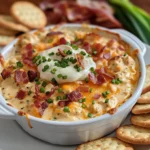Lemon Raspberry Swirl Cheesecake is a delightful dessert that perfectly balances tangy and sweet flavors. With a creamy lemon-infused cheesecake base swirled with a vibrant raspberry puree, it’s a treat that’s as beautiful as it is delicious. This cheesecake is perfect for special occasions like holidays, birthdays, or simply as an indulgence after a casual meal. Cheesecake, with its rich and smooth texture, is a timeless dessert, and adding lemon and raspberry gives it a fresh, zesty twist, elevating the classic recipe into something truly memorable.
Why Lemon and Raspberry Are a Match Made in Dessert Heaven
The combination of lemon and raspberry is a flavor harmony that delights the taste buds. Lemon, with its sharp, citrusy tang, contrasts wonderfully with the sweetness and slight tartness of raspberries. This balance creates a complex and refreshing flavor profile that cuts through the richness of the cheesecake, making each bite both indulgent and light. In a dessert like cheesecake, which can be quite dense, this fruity combination adds a burst of brightness and makes it more enjoyable for those who prefer desserts with a more nuanced, less overpoweringly sweet flavor.
What Makes This Recipe Unique?
This Lemon Raspberry Swirl Cheesecake stands out due to its perfect combination of flavors and textures. The homemade raspberry swirl adds a fresh, fruity element that’s vibrant in both color and taste. The creamy filling is enhanced with a punch of lemon zest and juice, giving it a bright citrus note without overwhelming the rich creaminess. Another unique feature is the method of swirling the raspberry puree into the batter, creating an eye-catching marbled design. The use of high-quality, fresh ingredients, such as fresh raspberries and lemons, takes this cheesecake to the next level.
Ingredients for the Crust
To make the crust, you will need:
- 1 ½ cups of graham cracker crumbs
- ¼ cup sugar
- 6 tablespoons melted unsalted butter
For the perfect crust, use high-quality graham crackers for a good balance between crunch and flavor. If you want to add a touch more depth to the crust, you can mix in a pinch of cinnamon or swap the graham crackers for digestive biscuits for a richer, buttery base. Ensure the butter is unsalted to control the saltiness and use a food processor to get an even, crumbly texture.
Ingredients for the Cheesecake Filling
The rich, creamy cheesecake filling requires:
- 24 oz (3 blocks) of full-fat cream cheese, softened
- 1 cup sugar
- 3 large eggs
- 1 cup sour cream
- 1 tablespoon lemon zest
- ¼ cup fresh lemon juice
Room-temperature cream cheese is essential for a smooth, lump-free filling. The addition of sour cream ensures a rich, velvety texture, while the fresh lemon juice and zest add a bright citrusy note that balances the richness. The eggs act as a binder and contribute to the cheesecake’s smooth, creamy consistency when baked.
Ingredients for the Raspberry Swirl
For the raspberry swirl, gather:
- 1 cup fresh raspberries
- 2 tablespoons sugar
- 1 teaspoon lemon juice
- 1 teaspoon cornstarch
Using fresh raspberries will give you the best flavor and color, but if necessary, frozen raspberries can work, too—just make sure to thaw and drain them well. The sugar adds sweetness to counterbalance the tartness of the berries, while cornstarch helps thicken the puree for a more stable swirl. Lemon juice amplifies the fruity flavor, ensuring it shines through against the cheesecake filling.
Step-by-Step Preparation Instructions
Step 1: Preparing the crust
- Crush graham crackers into fine crumbs using a food processor or by placing them in a sealed bag and rolling with a pin.
- Mix the crumbs with melted butter and sugar until the mixture resembles wet sand.
- Press the crumb mixture into the bottom of a 9-inch springform pan, creating an even layer. Bake at 350°F for 10 minutes, then set aside to cool.
Step 2: Making the lemon cheesecake filling
- Beat softened cream cheese and sugar together until smooth and fluffy.
- Add eggs one at a time, beating on low speed to avoid overmixing.
- Stir in sour cream, lemon juice, and zest until just combined. The mixture should be smooth and creamy.
Step 3: Creating the raspberry swirl
- In a small saucepan, combine raspberries, sugar, and lemon juice over medium heat.
- Cook until the raspberries break down and the mixture thickens, about 5 minutes.
- Strain the mixture through a fine-mesh sieve to remove the seeds, then stir in cornstarch to thicken further. Let it cool.
Step 4: Assembling the cheesecake
- Pour the lemon cheesecake filling over the cooled crust.
- Spoon the raspberry puree over the top and use a skewer or knife to swirl it into the cheesecake. Swirl gently to create a marbled effect.
Baking Instructions and Tips
- Preheat the oven to 325°F. Place the springform pan in a water bath to ensure even baking and prevent cracking.
- Bake for 55-65 minutes until the cheesecake is set but still slightly jiggly in the center.
- To prevent cracking, turn off the oven and allow the cheesecake to cool inside with the door slightly open for 1 hour.
- A water bath helps regulate the baking temperature and adds moisture, which prevents the cheesecake from drying out and cracking.
- Check for doneness by gently shaking the pan—the center should jiggle slightly but not be liquidy. This means it will firm up as it cools.
Cooling the Cheesecake
Cooling a cheesecake gradually is essential to prevent cracks from forming on the surface. Once the cheesecake is done baking, turn off the oven and leave the cheesecake inside with the oven door slightly ajar for about an hour. This allows the cheesecake to cool down slowly, minimizing sudden temperature changes that can cause cracking. After this, remove the cheesecake from the oven and place it on a wire rack to cool completely at room temperature. Once fully cooled, transfer it to the refrigerator to set for a minimum of four hours, or overnight for the best results.
Chilling Time for Best Texture
Chilling the cheesecake is a crucial step for developing its signature creamy texture. Allowing it to chill for at least 4 hours, but preferably overnight, gives the cheesecake time to firm up and set properly. During this time, the flavors also meld together, enhancing the overall taste. The cooling process helps the cheesecake solidify to a smooth, dense texture that contrasts perfectly with the bright raspberry swirl. Rushing this step could result in a cheesecake that’s too soft or runny when sliced, so patience is key for achieving that ideal velvety consistency.
Serving Suggestions and Presentation
For clean, professional slices, use a sharp knife dipped in hot water and wiped clean between each cut. This prevents the cheesecake from sticking to the knife and ensures each slice looks neat. For an elegant presentation, garnish the cheesecake with fresh raspberries, thin lemon slices, and a light dusting of powdered sugar. For added flair, serve with a side of whipped cream, extra raspberry sauce, or fresh mint leaves. These small touches not only enhance the visual appeal but also complement the cheesecake’s flavors beautifully.
Storage Tips for Leftovers
To store leftovers, cover the cheesecake tightly with plastic wrap or transfer it to an airtight container. It will keep well in the refrigerator for up to 5 days. If you wish to store it longer, cheesecake freezes well. Wrap individual slices in plastic wrap and then place them in a freezer-safe container or zip-lock bag. Frozen cheesecake can last up to 2 months. To thaw, place it in the fridge for several hours or overnight. This gradual thawing process helps maintain the creamy texture without making the cheesecake soggy.
Avoiding Cracks in the Cheesecake
Cheesecake cracks typically occur due to overbaking or sudden temperature changes. To avoid this, bake your cheesecake in a water bath. The steam from the water keeps the oven’s temperature consistent and prevents the cake from drying out. Additionally, avoid overmixing the batter, which can incorporate too much air and cause the cheesecake to rise and crack as it cools. Cooling the cheesecake slowly, first in the oven with the door slightly open and then at room temperature, also prevents cracks caused by sudden temperature drops.
Dealing with a Runny Filling
A runny filling is often the result of underbaking or incorrect ingredient proportions. To avoid this, always ensure your cheesecake is fully baked by gently shaking the pan. The edges should be set, and the center should jiggle slightly but not be liquid. Follow ingredient measurements precisely, particularly when it comes to eggs and sour cream, which help the cheesecake set. If you find that your cheesecake is too soft after chilling, it might need additional baking time or a thicker consistency of ingredients like cream cheese.
How to Fix an Overbaked or Dry Cheesecake
An overbaked cheesecake will often develop cracks and have a dry, crumbly texture. Signs of overbaking include deep cracks around the edges and a firm, non-jiggly center. To prevent this, bake the cheesecake at a lower temperature and check it frequently towards the end of the baking time. Use an oven thermometer to ensure your oven is at the correct temperature. If the cheesecake is already overbaked, serve it with a generous topping of raspberry sauce, whipped cream, or a fruit compote to add moisture and enhance the flavor.
Gluten-Free Lemon Raspberry Cheesecake
For a gluten-free version of this cheesecake, simply substitute the graham cracker crust with gluten-free graham crackers, which are widely available. Alternatively, you can use almond flour mixed with butter and a little sugar to form the crust. Almond flour adds a nutty flavor and pairs well with the lemon and raspberry flavors. The filling and swirl can remain the same since they are naturally gluten-free. With these small adjustments, you can create a dessert that’s safe for those with gluten sensitivities while maintaining the delicious taste.
Vegan or Dairy-Free Alternatives
To make a dairy-free or vegan cheesecake, substitute the cream cheese with vegan cream cheese, which can be found in most supermarkets. Replace sour cream with a plant-based alternative, such as coconut cream or cashew cream. For the eggs, use a flaxseed egg mixture (1 tablespoon ground flaxseed mixed with 3 tablespoons water per egg) or a commercial egg substitute. This version will still deliver a creamy and rich cheesecake while accommodating those with dietary restrictions. The lemon and raspberry components work equally well in this adaptation.
Other Fruit Swirls to Try
While lemon and raspberry make a classic combination, there are plenty of other fruit swirls you can experiment with to give this cheesecake a different flavor twist. Try using blueberries, strawberries, or blackberries in place of raspberries. You can follow the same method to create a fruit puree, adjusting sugar levels to taste. For an even more exotic flavor, try mango or passion fruit swirls. These alternatives provide a new dimension to the cheesecake while keeping the process simple and customizable.
FAQs Section
1. How do I prevent cracks in my cheesecake?
To prevent cracks, always bake your cheesecake in a water bath to ensure even cooking. The steam from the water helps regulate the temperature and keeps the cheesecake moist. Additionally, avoid overbaking—check for doneness when the center is still slightly jiggly. Allow the cheesecake to cool gradually, first in the oven with the door slightly ajar, then at room temperature before refrigerating. This slow cooling process prevents the sudden shrinkage that can cause cracks. Finally, avoid overmixing the batter to prevent incorporating too much air, which can also lead to cracking.
2. Can I use frozen raspberries instead of fresh?
Yes, you can use frozen raspberries if fresh ones are not available. However, make sure to thaw and drain the frozen raspberries thoroughly before using them. Excess water from the frozen berries can make the puree too thin and affect the consistency of the swirl. You may also need to add a little more cornstarch to the puree to help thicken it. The flavor remains delicious, and frozen berries are a great alternative during off-seasons when fresh raspberries might not be readily available.
3. How long does lemon raspberry cheesecake last?
Lemon Raspberry Cheesecake can be stored in the refrigerator for 3 to 5 days if kept covered to maintain freshness. Make sure it’s tightly wrapped in plastic or stored in an airtight container to prevent it from drying out or absorbing other odors from the fridge. If you want to store it for longer, the cheesecake freezes well. Wrap it securely in plastic wrap and place it in a freezer-safe container for up to 2 months. When you’re ready to enjoy it again, thaw the cheesecake in the refrigerator overnight for the best texture and flavor.
Print
Luscious Lemon Raspberry Swirl Cheesecake
Description
This vibrant cheesecake combines the creamy richness of classic cheesecake with a tangy lemon swirl and sweet raspberry puree for an elegant dessert. The graham cracker crust adds a buttery crunch, while the citrusy and berry flavors bring brightness to each bite. A perfect centerpiece for any special occasion!
Ingredients
For the Crust:
- 2 cups graham cracker crumbs
- 1/2 cup unsalted butter, melted
- 1/4 cup granulated sugar
For the Cheesecake Filling:
- 3 cups cream cheese, softened
- 1 cup granulated sugar
- 1 tsp vanilla extract
- 3 large eggs
- 1 cup sour cream
- Zest of 2 lemons
- Juice of 1 lemon
For the Lemon Swirl:
- 1/2 cup lemon curd
- 1 tbsp lemon juice
For the Raspberry Swirl:
- 1/2 cup raspberry puree (blend fresh or frozen raspberries)
- 1 tbsp sugar
For Garnish:
- Lemon zest curls
- Fresh raspberries
- Whipped cream
Instructions
1️⃣ Preheat the oven: Preheat your oven to 325°F (160°C). Grease a 9-inch springform pan.
2️⃣ Prepare the crust: In a bowl, combine the graham cracker crumbs, melted butter, and sugar. Mix until fully combined. Press the mixture firmly into the bottom of the prepared springform pan to create an even crust. Set aside.
3️⃣ Make the cheesecake filling: In a large bowl, beat the softened cream cheese and 1 cup of granulated sugar until smooth and creamy. Add the vanilla extract and eggs, one at a time, beating well after each addition. Mix in the sour cream, lemon zest, and lemon juice until everything is fully combined.
4️⃣ Layer the filling: Pour half of the cheesecake filling over the graham cracker crust and smooth the top with a spatula.
5️⃣ Prepare the lemon and raspberry swirls: In a small bowl, mix the lemon curd with 1 tablespoon of lemon juice until smooth. In another small bowl, combine the raspberry puree and 1 tablespoon of sugar.
6️⃣ Create the swirls: Drop spoonfuls of the lemon curd mixture and raspberry puree onto the cheesecake filling. Use a knife to gently swirl the two mixtures into the filling, creating a marbled effect.
7️⃣ Add the remaining filling: Pour the remaining cheesecake filling over the top of the swirled layer and smooth it out evenly.
8️⃣ Bake the cheesecake: Place the cheesecake in the oven and bake for 50-60 minutes, or until the center is set but still slightly jiggly. Turn off the oven, leave the door slightly ajar, and allow the cheesecake to cool completely inside the oven to prevent cracking.
9️⃣ Chill the cheesecake: Once cooled, refrigerate the cheesecake for at least 4 hours or preferably overnight to let it firm up.
Notes
- For the raspberry puree, simply blend fresh or thawed raspberries and strain through a fine sieve to remove the seeds.
- Allowing the cheesecake to cool gradually in the oven helps to prevent cracks on the surface.





